|
Each and every birth is different which also means each Mother’s return to exercise and postnatal recovery will be different too. It is important to check in with your health professional before returning to exercise, ideally this would be a women’s health physio. How long should I wait? There is no one rule that fits all in this circumstance but the general guidelines will differ significantly depending on what type of birth you have. It also depends on what your exercise levels were before giving birth. Vaginal Birth: It is safe to start doing very gentle pelvic floor exercises and slow walks a few days after birth, although more vigorous based exercise should be avoided until after your 6 week check up. Once cleared to resume exercise you should not be exercising at full, pre-birth intensities until around 16 weeks postpartum. Caesarean Birth: As a Caesarean is a major operation it will take at least 6 weeks for tissues to heal. Gentle pelvic floor exercises can be done a few days after birth but gentle low impact aerobic exercise should be done 6-8 weeks postpartum. High impact exercise and heavy weights should be avoided until 3-4 months postpartum once scar tissue has fully healed. Why is exercise beneficial for new Mum’s? Whilst everyone benefits from regular exercise there are some additional benefits for new Mum’s, which include but are not limited too;
What pregnancy changes might affect my ability to exercise postpartum? The female body is amazing and goes through many changes over the course of pregnancy, birth and postpartum. During pregnancy and labour our hormone levels are at an all time high and this can affect your joints and ligaments for up to 6 months afterwards. This highlights why it is important to ease back into exercise even if you are feeling great. During your pregnancy your abdominal muscles may have separated causing Diastus Recti. This can have long term effects if not treated correctly in its early stages and will determine what types of exercises are safe to be doing. The Pelvic Floor is made up of muscles and ligaments that support the bladder, uterus and bowel. This can be weakened during labour, particularly if you had a vaginal birth. Regular pelvic floor exercise can help to strengthen the area and prevent prolapse and leaky bladder in the future. What type of exercise should I be doing?
Low impact exercise will be the best place to start postpartum. In the first few days after birth, focusing on resting and caring for your newborn baby is most important. Some gentle pelvic floor exercises can be done. Think about Squeezing and lifting the muscles around your Vagina as you are trying to hold in a wee, try holding this for 5-8 seconds and then fully relax. Other low-impact exercises that maye suitable include;
Try starting small by incorporating short bouts of exercise into your day. For example walk with the pram down to the shops, think about doing your pelvic floor exercises whilst feeding your baby, etc. Before returning to any exercise postpartum it is important to consult your health professional first and go at your own pace. Written by, Aleisha Michael Accredited Exercise Physiologist.
0 Comments
It is commonly believed that hamstring injuries cause the biggest time loss and are one of the biggest detrimental factors to team performance. This is in the elite sport setting but hamstring injuries are also very common in amateur and community sport as well. Hamstring injuries also don't have to be on the sporting field. One of the biggest risk factors for getting a hamstring injury is previous hamstring injury, so prevention is always better than trying to treat a previous hamstring injury. If you have been unfortunate enough to have had a hamstring injury, don't worry there are still things we can do to lower your risk. What are the hamstrings and what is a hamstring injury? The hamstrings are a group of muscles that sit at the back of your thigh. There are three, Bicep Femoris, Semitendinosus and Semimembranosus. All three cross over the hip and knee joints and therefore all three contribute to both hip and knee function. Their two primary roles are to flex or bend the knee and extend the hip. A hamstring injury is when there is a tearing of the hamstring muscle fibres because of an excessive force or stretching is placed upon the muscle fibres. Hamstring strains happen in all different activities but the most common way to injure a hamstring muscle is while running, and more specifically in the end of the swing phase of the running gait. During this phase the hip is going into flexion and the knee is going into extension. The role of the hamstring during this phase is to control these two movements and contract while lengthening, this is called an eccentric contraction and if there is too much force or the muscle is fatigued then a strain or a tear can occur. Acute rehab phase Directly after a hamstring strain it is important to use the acronym PEACE & LOVE (Protect, Elevate, Avoid anti-inflammatories, Compression, Education & Load, Optimism, Vascularisation, Exercise). Read our blog on this topic to learn more. Allowing the hamstring injury to recover by protecting it and not applying unnecessary excessive force initially and then also using movement and appropriate loading early in rehabilitation is the key for the best outcomes. Maintaining some form of exercise is also key, just because you have a hamstring strain does not mean you can't exercise. A great exercise for optimal loading is the Hamstring Isometric Holds, you apply isometric ( contraction with no muscle length change) loading to the muscle which can help with pain management and you can find the optimal load to apply which can be changed as you progress. Below is the hamstring Isometric holds. Try holding for up to 5 times for up to 30s. Getting back to activities Activities like walking and slow running are great exercises for improving the function of your hamstrings early on and should be a focus for hamstring rehabilitation after the initial acute phase. Building up hamstring strength in the gym or at home with exercises is also important to make sure the hamstring builds its capacity back to what it needs to tolerate to avoid another injury. In my personal opinion this step is probably the most skipped and could be a reason for some hamstring re injuries. What not to do Along with any injury rehab there are always things to avoid to get the best outcome and in hamstring injuries this is passive stretching! Passive stretching is forcefully putting the hamstring on stretch and holding this position and if you remember from my explanation above this is effectively putting the hamstring in the same position as how it got injured. Of course we want to maintain the length and function of the hamstring however passively stretching is not going to help this. What to do to maintain function and length of the hamstrings! Let’s let the powers of human function, biomechanics and brain power help us out. With every hamstring contraction there is another muscle on the front of the leg the quadriceps which is lengthening. If the quads activate then the hamstrings lengthen and the brain allows and facilitates this. So for an Exercise that helps with maintaining the function and length of the hamstring while injured try performing active knee extension and flexion either in lying or a seated position. Here shown in the lying position. Try it just gently to begin with. Going from injury to strength. In order to get the best possible outcome for your hamstring recovery it is important that you can progressively load and expose the hamstring to different types of stimulus. Probably the most important action for any hamstring recovery is trying to increase the maximal force that can be applied during an eccentric contraction, just like the mechanism of a hamstring injury. Mid to late stage exercises to perform to get back to activities effectively are shown below. I would also add getting back to high speed running progressively is also very important!
This type of bridge is best done in mid stage rehabilitation to build up the hamstrings tolerance for load. Begin with a double leg and progress to single leg.
* probably best done with a partner holding your legs but here I have used a heavy object on my heels.
The Nordic Hamstring Curls apply force to an eccentric contraction and help build up the strength in this particular movement. These exercises can be progressed and regressed according to how hard they feel, and should be done consistently after you return to your activity to help lower your risk of another injury. Keeping the hamstrings strong is pivotal in keeping you hamstring injury free. Of course this is not a complete guide nor is it a program to follow but it does give you an insight in how you can go from injury to strength. If you would like a personalised injury prevention program or a hamstring rehabilitation program contact the clinic. Izaac Boylan Accredited Exercise Physiologist What is Bursitis? Bursitis is a condition that causes the small, fluid-filled sacs called bursae to become inflamed. A bursa is responsible for cushioning the tendons, ligaments, bones and muscles near the joint and preventing friction from occurring. This condition usually occurs in joints that are involved in repetitive movements, such as the shoulder, elbow, hip and knee. What are the symptoms? There are a range of symptoms that can present when bursitis has developed within the shoulder joint, including;
Causes of shoulder bursitis There are a number of potential causes but some of the most common can be a single injury such as a fall, repeated minor trauma like overuse injuries of the joint or muscles around the joint. When bursitis is caused from overuse injuries it is often associated with impingement and inflammation of the rotator cuff tendons as well. Prevention of shoulder bursitis Whilst it is difficult to determine singular causes in the development of bursitis there are a range of secondary factors that can contribute. Reducing causes of primary and secondary impingement are crucial in preventing shoulder bursitis and rotator cuff problems. Factors such as posture, muscle length, shoulder stability and rotator cuff strength can all contribute to the development of bursitis over time. Each of these factors can be optimised by completing specific exercises prescribed from a trained allied health professional. Treatment of shoulder bursitis
Shoulder bursitis is one of the most common shoulder injuries that presents in a range of populations. The rotator cuff muscles are responsible for the centralisation and stability of the shoulder joint. Adequate control within the shoulder then prevents injuries such as bursitis, impingement and dislocations. Interestingly, the arm only has one bony joint attachment where the collarbone meets the tip of the shoulder blade. The remainder of the shoulder joint attachment and stabilisers are all muscular, highlighting the importance of maintaining strength in the shoulder. Treatment for shoulder bursitis focuses on increasing range of movement in the shoulder joint without pain, regaining control of the shoulder blades, upper back and neck and improving strength in the rotator cuff and shoulder muscles. Each of these steps can take a number of weeks to successfully complete, so it is important to be patient and consistent during your treatment. If you suffer from shoulder bursitis, visit your local Accredited Exercise Physiologist who can help return your function and decrease pain! Written by, Aleisha Michael Accredited Exercise Physiologist. Injuries are a very common occurrence in sport or the workplace and there are a multitude of factors that play a role for an injury to occur. Injuries can be niggling and can threaten to derail your sports season. Injuries also play a role when it comes to limiting you at work and your everyday life and therefore I feel injuries are very important to manage correctly. Below will outline what the most recent and up to date research says about how you should go about your rehabilitation so you can recover in the quickest time possible with the best outcomes possible. Have you heard of RICE ( Rest, Ice, Compression and Elevation)? Or what about POLICE ( Protection, Optimal Loading, Ice, Compression, Elevation)? These 2 acronyms have been used throughout the years as ways to help people manage injuries and at the time were based on the latest research. These practices are still very commonly used when someone suffers an injury. But is this what the latest research says? Are we providing the best management for our injuries? In 2019 new research emerged and with it, a new acronym for us to live by when managing injuries, PEACE & LOVE. This new acronym helps us manage directly after an injury has occurred, but also gives us a framework for management to get back to pre-injury capacity. What does this mean for us who are trying to manage an injury? Well I will go through step by step. The word PEACE helps us understand what the necessary approach is directly after an injury has occurred. P for protection It is recommended to minimise movement and load on an injury for the first 1-3 days to reduce the risk of aggravating the injury, minimise bleeding to the area and prevent distension to the injured muscle. E for elevate Elevate the limb or body part higher than the heart to be able to remove any unwanted fluid around the injury. A for avoid anti-inflammatories The body’s way of repairing an injury is through inflammation. Inflammation carries all the right things for your body to go through the process of repairing itself. Therefore taking anti-inflammatories which are designed to stop this process could affect long term healing. What about ICE? It has been a stalwart in the injury management space for many years now but according to the most recent research it is unknown whether ice helps the healing process of an injury. It is believed ice reduces inflammation which we know is very beneficial and necessary to healing. In fact the researcher, by the name of Dr Gabe Mirkin, who invented the term RICE back in 1978, has retracted his research and now has the view that ice and rest may actually delay healing not help it. Ice is thought to have a pain relieving effect on an injury and therefore does have a role in injury management but not as initially first thought. C for compression Compressing an injury with external pressure like a bandage or compression garments you can buy these days assists to reduce swelling and muscle bleeding E for education Correct education from a health professional helps to avoid overtreatment and should give you the confidence in your body’s healing mechanism. You should be trying to stay away from passive treatments especially in the long term and try to use more active approaches to management. The mentality “I need fixing” is detrimental to your recovery. If you don't understand your specific injury or don't know how to rehabilitate it, speak to a health professional for help and education on correct treatment and load management for a full recovery. & After the initial management of an injury, all it needs is some LOVE. L for load Load should be added early on in your rehabilitation and you should try and resume your normal activities as soon as you feel comfortable doing so. Loading that does not exacerbate pain assists repair and recovery of your muscles, allowing you to regain the capacity and strength you previously had. O for optimism Psychological factors play a larger role in a person's recovery than people release. Factors such as catastrophizing your injury and fear or anxiety over your injury can prevent optimal outcomes. It is believed that psychological factors may drive the variation you see in certain injuries, more so than the injury itself. Stay positive, be optimistic and believe in your body’s healing process. V for vascularisation Aerobic exercise is a fundamental aspect of any injury rehabilitation process as it promotes blood flow to the injured area and is proven to improve mood, psychological well being and motivation. So find a pain free aerobic exercise that you enjoy and begin with that. E for exercise
Exercise is thought to be the gold standard in terms of treatment for injuries and research has demonstrated positive outcomes for all types of injuries. Exercise has many different mechanisms of improving the capacity of an injured body part or an injured person and it is important to continue to exercise any way possible through an injury period. There is plenty to understand and to cover when you get an acute injury however remember to use the acronym PEACE for directly after an injury has occurred and use love for the rehabilitation process. Bottom line is you want to stay as active as you can and in the beginning phase of an injury be guided by your pain to what you can and can't do. Loading the injury to a tolerable level is only helping healing, not hindering it. Izaac Boylan Accredited exercise physiologist 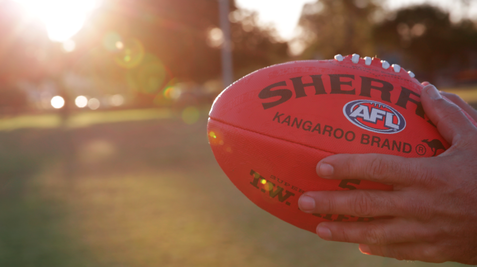 It has been a very different year in regard to local community sports and how/ if they are running due to COVID-19 restrictions. It is great to see some sports happening again and bringing with it many positive benefits for our physical, mental and over wellbeing. Although the preparation for this year’s winter sports has not ran as usual and as a result meant players physical fitness and condition may not be quite up to scratch. When the game day and training demands are much higher than a player’s current physical capacity are not quite meeting up it can increase the likelihood of injury significantly. This can be due to pushing your body harder that it is capable of at that point of time, placing increased stress on each of your body systems. Why is injury more likely? It’s no secret that the first few games of any sporting season usually make you feel more fatigued than usual and this is largely due to the body not being accustomed to the high degree of sport specific demands that are placed on the body. Weather it is the high contact nature of football or the short sharp bursts of speed needed in hockey, the body takes a little while to re-adjust to sport when you first get back into it. The difference in regard to the 2020 sporting seasons is that as structured trainings during the pre-season have not been able to occur as much, your body has not had the time to prepare adequately. If you are a player who relies heavily on building your fitness level during structured training sessions and complete little extra independently at home, you may have put yourself at a higher risk of injury due to a lack of preparation. For those not competing in elite level sport and not training regularly in the off season it is normal for declines in muscular strength, endurance and general conditioning to occur. This is then built up again over the off season, conditioning the body for competition intensity and loads. When this conditioning has not occurred the risk of injury increases as the body tries to complete more than it can handle. Depending on the sport and the specific movement patterns, different areas of the body are more susceptible to injury. For example, footballers are more likely to have a knee or lower limb muscle tear whereas netballers are more inclined to experience ankle and knee joint related issues. Ways to help outside of game day? So how can you help to prevent injuries and prepare yourself for sport?
How to help on game day?
I know we are all loving having sport back on in the community and we hope that you are too. Try implementing a few of these tips to help you stay in the game all season! By Aleisha Michael Accredited Exercise Physiologist 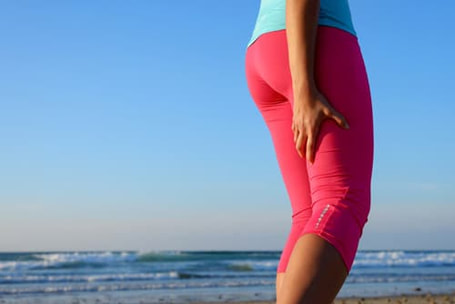 The Hamstring muscle group, often referred to as the “hammie” is often associated with sports injuries like muscle tears, BUT.. they could be causing a lot more than just that. What make up the Hamstring? The hamstring muscle group is not as strong as it’s quadricep counterpart, but they are pretty crucial in our ability to move. The group is made up of 3 individual muscles that sit under the back of your thigh, Semitendinosus, Semimembranosus and Biceps femoris. They all cross two joints, the hip and the knee meaning that they can produce hip extension by bringing the leg back behind you or knee flexion by bending the knee back. How can Hamstring injuries occur? In a normal functioning leg, every action in your quadricep muscles at the front of your leg causes an opposite reaction in the hamstrings at the back of your leg. These two muscles work very closely together to allow you to move both your hip and knee joints and stabilise the pelvis. While it is normal and expected for the quadriceps muscles to be stronger than the hamstrings it is important to have a correct balance of strength in both groups. When there is a strength imbalance between the two the hamstrings may be too weak to support the actions of the quadriceps. This imbalance can often be caused by sitting and running and when an imbalance does occur it can cause problems such as lower back pain and an increased risk of hamstring strains or tears to occur. What can weak hamstring’s cause? When the hamstring muscles are weak it causes additional load and stress to be placed on it’s surrounding muscle groups, as the hamstrings aren’t able to handle higher loads or intensities. This can result in overuse strains or injuries to occur in the gluteal muscles, the quadriceps and even the lower back. What can tight hamstring’s cause? Tight and inflexible hamstrings can often be a contributor to lower back pain. This can happen through tight and constantly contracted hamstrings putting additional stress on the hips and pelvis. This causes the pelvis to tilt back, which subsequentially places added tension and pressure onto the spine and vertebrae. When prolonged periods of tightness occur muscles spasms and strains in the lower back can begin to occur consistently. Hamstring tightness can also cause patella-femoral pain syndrome which basically causes an increased strain between the kneecap and thigh bone. How to prevent Hamstring injuries or tightness:
By Aleisha Michael Accredited Exercise Physiologist 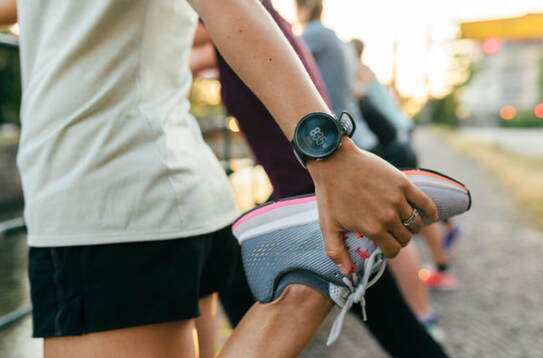 Stretching has been a hot topic in the health and fitness world for a few years now and one that everybody seems to have their own opinions on! When should I stretch? How long should I stretch for? What types of stretching should I be doing? We will discuss all these questions and more! What is stretching? Stretching is the act of getting you out of the posture that you spend most of your time in and moving joints through their full range. It involves placing parts of your body into a position that with lengthen the muscles and surrounding fascia/ connective tissue. It can be done before or after exercise but also throughout the day when in sustained postures, to prevent muscle tightness, aches and pains and improve circulation. What types of stretching should you be doing? As a general rule of thumb there are two main types of stretching; ● Static stretching – this type of stretch is performed without movement meaning you would get into the stretch position and hold that position for a given amount of time. ● Dynamic stretching – this type of stretch is performed with movement meaning you use a swinging or bouncing movement to extend your range of motion and flexibility. Depending on what you are trying to achieve from your stretching (eg. Warming up before exercise or increasing muscle length) will determine which type of stretching to complete and when. When should you stretch? It has long been believed that we should stretch for long periods of time before and after an activity, but this isn’t necessarily true! It is crucial to warm-up your body prior to exercise through dynamic movements. The aim of these movements before exercise is not to improve your flexibility but to simply prime the muscles, joints, ligaments and tendons that you are about to use. In regard to trying to improve your flexibility and muscle length the most effective time to conduct this type of static stretching is after exercise as the muscles are warm and pliable. Another great time to stretch can be straight before bed as this is when our muscles and soft tissues heal, meaning they are healing in an elongated or stretched position that was achieved before going to sleep. How long should your stretch for? When completing static stretching a single stretch should be held for at least 30-60 seconds and repeated two or three times on each side. This gives the muscle enough time to relax and begin to lengthen. When performing dynamic stretches prior to exercise the duration ca depend on a number of things including how tight you may be already, the temperature and how long your exercise session is going to be. At a minimum, dynamic stretches should be performed for 5-10 minutes before any exercise, but longer than this for higher intensity, longer duration activities. If you would like more assistance or guidance around stretching, get in touch with us! By Aleisha Michael Accredited Exercise Physiologist. |
AuthorSLisa Parkinson Archives
March 2024
Categories
All
|

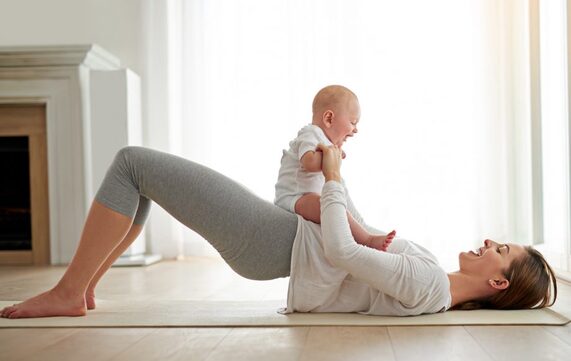
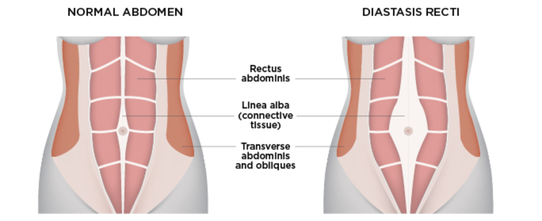
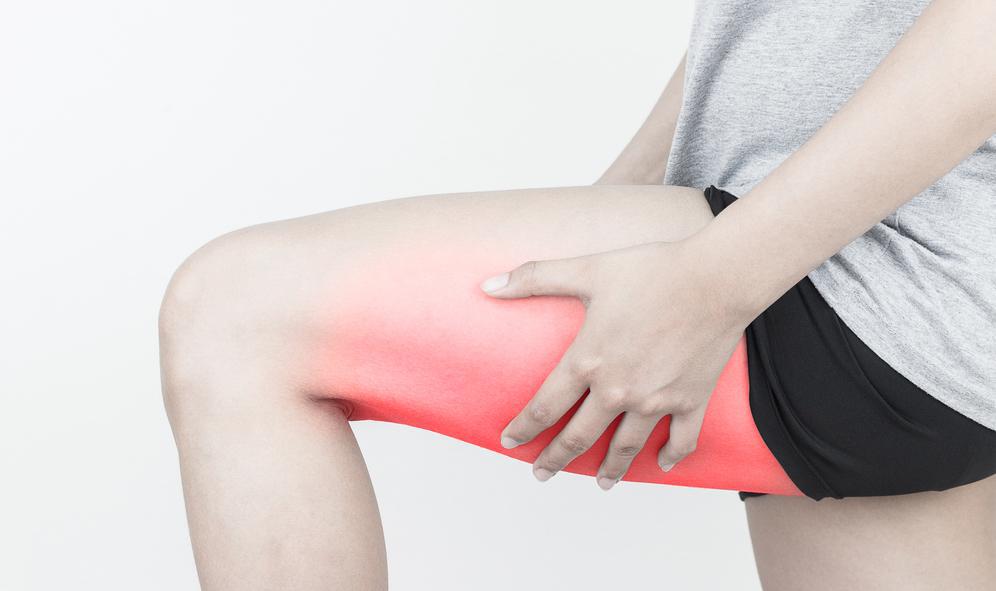
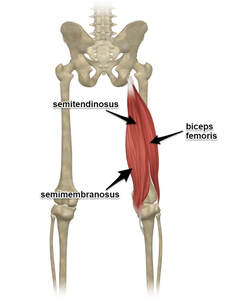
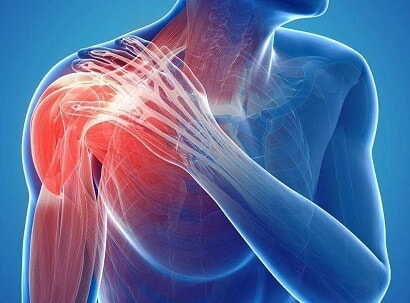
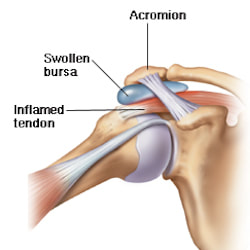
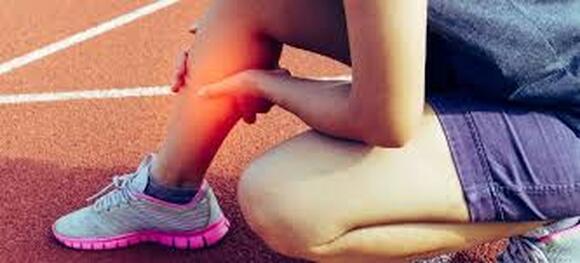
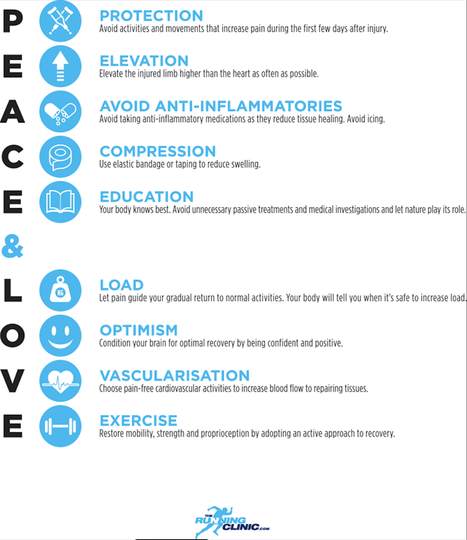
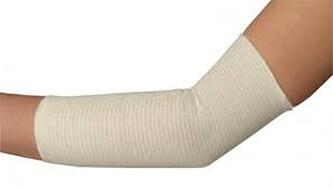
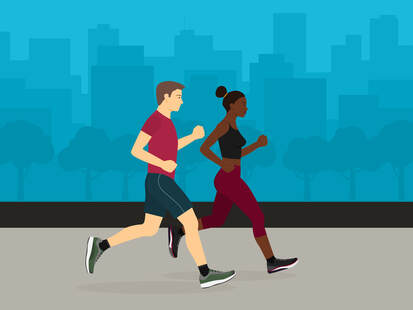
 RSS Feed
RSS Feed